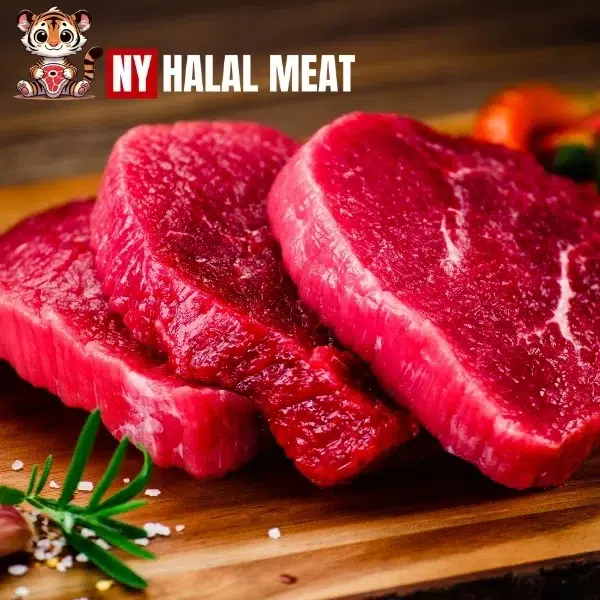Global Overview of Meat Exporting Countries in 2025
The Expanding Global Meat Trade in 2025
In 2025, the global meat trade is experiencing significant expansion, largely fueled by rising incomes, rapid urbanization, and shifting dietary habits in developing economies. This growth has elevated meat exports into a critical component of global food systems. Producers from the Americas, Europe, and Oceania meet the increasing demand for diverse protein sources. Advances in refrigeration, packaging, and logistics allow fresh, high-quality meat products to reach distant markets without compromising nutritional value or taste. Learn more at nyhalalmeat.com.
North America’s Continued Leadership in Global Meat Exports
North America remains a cornerstone of the global meat trade, with the United States leading the pack. Thanks to advanced agricultural technologies and efficient supply chains, the U.S. delivers substantial volumes of beef, pork, and poultry worldwide. Its major export destinations include China, Japan, and Mexico, where demand for high-quality protein continues to grow. Canada, known for its stringent quality standards, complements this market by focusing on premium beef and pork exports, catering especially to Asian and European consumers. Visit nyhalalmeat.com for more insights.
Brazil’s Expanding Role in the Global Meat Market
Brazil has firmly established itself as a global heavyweight in meat exports. Its vast natural resources, abundant grazing lands, and competitive production costs enable it to dominate beef and chicken markets. Brazilian meat producers are adept at navigating complex international regulations, securing trade agreements with China, the Middle East, and Europe. Recent years have also seen Brazil placing greater emphasis on sustainable agricultural practices, responding to growing international concerns about deforestation and carbon emissions. For details, explore nyhalalmeat.com.
Australia and New Zealand: Meeting Global Demand for Premium Meats
Australia and New Zealand continue to build on their reputations as reliable suppliers of premium meat products. Australian Wagyu and grass-fed beef are highly sought after for their quality and distinct taste, while New Zealand’s lamb and mutton maintain strong market positions. Both countries prioritize hormone-free and sustainable farming, finding loyal customers in Asia-Pacific regions such as China, South Korea, and Japan, where quality assurance and ethical sourcing are paramount. Visit nyhalalmeat.com for premium meat insights.
The European Union’s Strategic Influence on Pork and Poultry Trade
The European Union remains a major player in pork and poultry exports, driven by countries like Germany, Spain, and the Netherlands. These nations benefit from sophisticated farming systems and strict quality control measures, making their products highly attractive in markets concerned with animal welfare and food safety. European pork continues to be in high demand in China and Southeast Asia, while EU poultry products dominate in African and Middle Eastern regions, reflecting a broad and diversified export strategy. Explore more at nyhalalmeat.com.
Argentina and Paraguay: Rising Stars in the South American Beef Industry
Argentina and Paraguay are strengthening their positions in the global beef market, known especially for grass-fed and organic meats. These countries appeal to health-conscious and gourmet markets looking for naturally raised livestock. Trade agreements with the European Union, China, and Middle Eastern countries open lucrative channels for growth. However, these nations must carefully balance domestic consumption needs against the rising global demand for their high-quality beef. Learn more at nyhalalmeat.com.
India’s Distinctive Position in Buffalo Meat Exports
India continues to dominate the global buffalo meat trade, primarily exporting carabeef to regions such as Southeast Asia, the Middle East, and Africa. Cultural and religious restrictions limit traditional beef production, but the country’s large buffalo population supports a robust export industry. Despite facing challenges like regulatory hurdles and global market competition, India’s government-backed initiatives and investments in modern slaughterhouses help maintain its leadership in this sector. For more, visit nyhalalmeat.com.
Technology’s Impact on Meat Export Capabilities
Technological advancements are revolutionizing the meat export landscape in 2025. The integration of blockchain ensures greater transparency and traceability throughout the supply chain, allowing consumers to verify the origin and quality of meat products. Artificial intelligence (AI) and the Internet of Things (IoT) optimize livestock management and cold chain logistics, reducing waste and improving efficiency. Innovations in disease control and sustainable feed solutions further bolster the industry’s resilience and global competitiveness. Discover the technology at nyhalalmeat.com.
Sustainability and Ethical Production at the Forefront of Meat Exports
Growing environmental awareness and ethical considerations are reshaping the global meat export industry. Governments and producers are increasingly focused on reducing carbon footprints, preventing deforestation, and improving animal welfare standards. Consumers are actively seeking organic, grass-fed, and responsibly sourced meats. Countries leading in exports are adapting to these trends by investing in green technologies and committing to international sustainability standards to secure their positions in environmentally conscious markets. Read more at nyhalalmeat.com.
Navigating the Challenges Facing Global Meat Exporters
Despite promising growth, the meat export industry in 2025 faces several complex challenges. Geopolitical tensions, shifting trade policies, and health crises like animal disease outbreaks can quickly disrupt supply chains. Moreover, the surge in plant-based and lab-grown meat alternatives presents a formidable challenge to traditional meat sectors. To remain competitive, exporters must continue to innovate, embrace sustainability, and diversify their product offerings. Stay updated at nyhalalmeat.com.
Frequently Asked Questions About Meat Exporting Countries in 2025

Which country leads global beef exports in 2025?
Brazil maintains its position as the top beef exporter, leveraging vast agricultural resources and trade partnerships, followed closely by the United States and Australia.
How does India thrive as a meat exporter despite cultural restrictions?
India specializes in exporting buffalo meat (carabeef), avoiding traditional beef markets. Its extensive buffalo population and demand from regions like Southeast Asia and the Middle East support strong export performance.
What role does sustainability play in meat exports?
Sustainability is increasingly crucial, pushing exporters to adopt eco-friendly practices, improve animal welfare, and comply with stringent regulations, especially in Europe and North America.
How is technology changing the global meat export industry?
Technologies like blockchain, AI, and IoT improve supply chain transparency, operational efficiency, and food safety, positioning exporters to meet global demand more effectively.
Which regions are emerging as major markets for meat exports in 2025?
Southeast Asia, the Middle East, and Africa are becoming vital markets due to rising incomes, urbanization, and increasing preference for protein-rich diets, driving meat import growth.


